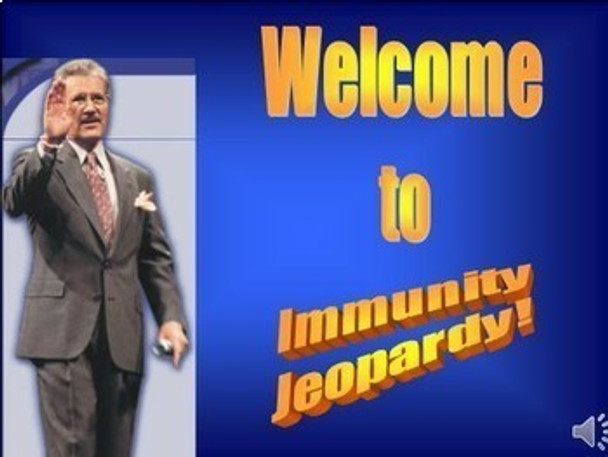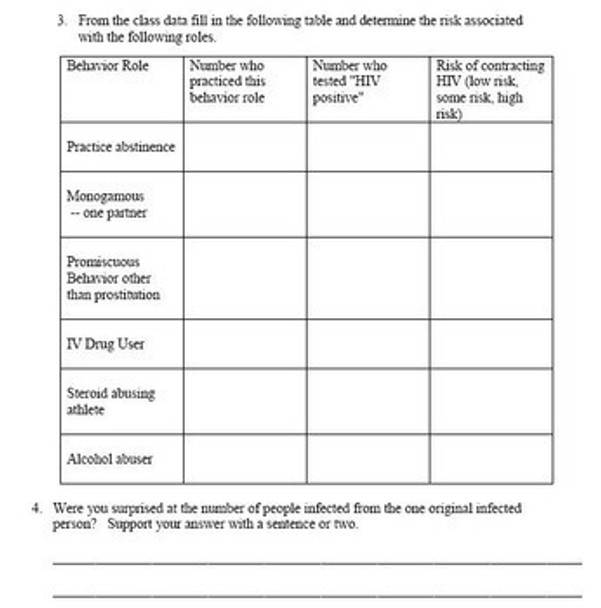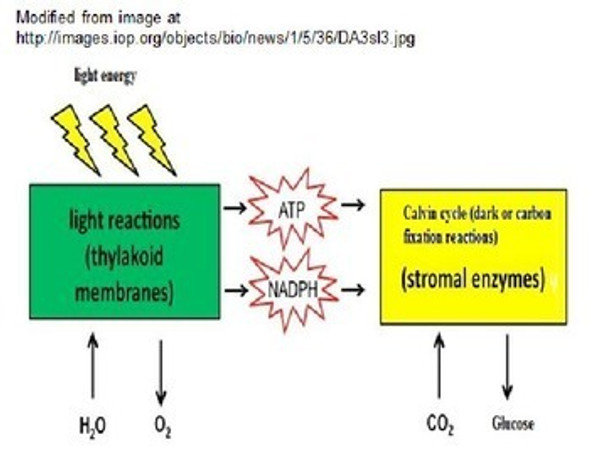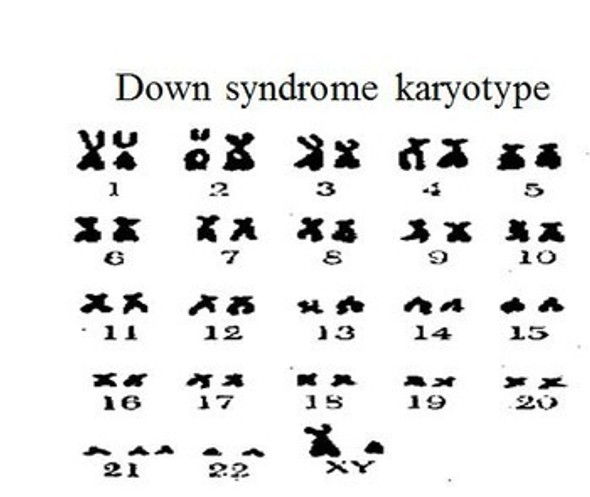Description
This zip file contains 9 different activities for students (50 total pages) which can be used to compose a unit for biology students introducing them to Immunity. While these lessons were originally designed to correlate to the performance indicators of the New York State Living Environment/Biology curriculum, the components of this lesson may be easily used in other biology courses as well. These activities have been correlated both to New York State Learning standards, as well as the Next Generation Science Standards.
The 50 pages of pdf files have corresponding editable word documents to allow you to use the materials in a manner which best suits your course. These documents are well suited for use in distance learning environments.
The zip file specifically contains the following items:
- Marzano self assessment scale for students specific to this unit
- Cloze notes handout for students with learning goals
- 44 frame PowerPoint to accompany the cloze notes containing 3 bell ringer activities with answers
- Spread of a Simulated Disease Lab activity
- Simulated Blood Typing and Paternity Case Lab activity
- Immunity Worksheet 1 with key
- Immunity worksheet 2 with key
- Immunity worksheet 3 with key
- Immunity Practice quiz for students with answers
- Jeopardy Review Game in PowerPoint format
- Immunity Unit Exam and Answer Key
- Learning goals and correlations to the NGSS, Common Core and NY Living Environment standards and performance indicators
Immunity Learning Goals
Upon the completion of this unit the student will:
1. define disease as a failure of homeostasis and list examples of this.
2. recognize that viruses, bacteria, fungi. and other organisms may invade other plants and animals interfering with their homeostasis.
3. explain what is meant by the immune response.
4. state the function of natural killer cells.
5. define the term antigen.
6. define the term antibody.
7. explain how phagocytes and lymphocytes assist in the immune function.
8. recognize that some white blood cells may mark antigens for attack by other white blood cells or antibodies.
9. recognize that antibodies have specific shapes which allow them to attack specific antigens.
10. explain what is meant by immunity.
11. explain how receiving a vaccination or recovery from a disease may produce a primary and secondary immune response.
12. explain the difference between active and passive immunity and list some ways of getting each of these.
13. explain what an allergy is.
14. explain the difference between a histamine and an antihistamine.
15. explain what is meant by autoimmune diseases and list some examples of these.
16. discuss what AIDS is and explain how it destroys the immune system.
17. relate our knowledge of immunity to tissue transplantation and blood typing.
18. explain the role of lymph nodes in the immune process.
19. list 5 other causes of disease besides infections or parasitic attacks and list some examples of each of these causes.
20. explain what cancer is and how it interferes with homeostasis.
21. recognize that exposure of cells to certain chemicals and radiation increases the chance of having a mutation and getting cancer.
22. recognize that biological research may generate knowledge used to prevent, diagnose, treat, control, and cure diseases of plants and animals.
NGSS Learning Standards
HS-LS1-2. Develop and use a model to illustrate the hierarchical organization of interacting systems that provide specific functions within multicellular organisms.
HS-LS1-3. Plan and conduct an investigation to provide evidence that feedback mechanisms maintain homeostasis.
HS-LS3-2. Make and defend a claim based on evidence that inheritable genetic variations may result from: (1) new genetic combinations through meiosis, (2) viable errors occurring during replication, and/or (3) mutations caused by environmental factors.
HS-LS3-3. Apply concepts of statistics and probability to explain the variation and distribution of expressed traits in a population.
Common Core State Standards Connections:
ELA/Literacy
RST.11-12.1 Cite specific textual evidence to support analysis of science and technical texts, attending to important distinctions the author makes and to any gaps or inconsistencies in the account.
WHST.9-12.1 Write arguments focused on discipline-specific content.
WHST.9-12.2 Write informative/explanatory texts, including the narration of historical events, scientific procedures/ experiments, or technical processes.
WHST.9-12.5 Develop and strengthen writing as needed by planning, revising, editing, rewriting, or trying a new approach, focusing on addressing what is most significant for a specific purpose and audience.
Mathematics
MP.2 Reason abstractly and quantitatively.
MP.4 Model with mathematics.
HSN-Q.A.1 Use units as a way to understand problems and to guide the solution of multi-step problems; choose and interpret units consistently in formulas; choose and interpret the scale and the origin in graphs and data displays.
NY Living Environment Core Curriculum
Performance Indicator 2.1 Explain how the structure and replication of genetic material result in offspring that resemble their parents.
Major Understandings
2.1e In sexually reproducing organisms, the new individual receives half of the genetic information from its mother (via the egg) and half from its father (via the sperm). Sexually produced offspring often resemble, but are not identical to, either of their parents.
Performance Indicator 5.2
Explain disease as a failure of homeostasis.
Major Understandings
5.2a Homeostasis in an organism is constantly threatened. Failure to respond effectively can result in disease or death.
5.2b Viruses, bacteria, fungi, and other parasites may infect plants and animals and interfere with normal life functions.
5.2c The immune system protects against antigens associated with pathogenic organisms or foreign substances and some cancer cells.
5.2d Some white blood cells engulf invaders. Others produce antibodies that attack them or mark them for killing. Some specialized white blood cells will remain, able to fight off subsequent invaders of the same kind.
5.2e Vaccinations use weakened microbes (or parts of them) to stimulate the immune system to react. This reaction prepares the body to fight subsequent invasions by the same microbes.
5.2f Some viral diseases, such as AIDS, damage the immune system, leaving the body unable to deal with multiple infectious agents and cancerous cells.
5.2g Some allergic reactions are caused by the body's immune responses to usually harmless environmental substances. Sometimes the immune system may attack some of the body's own cells or transplanted organs.
5.2h Disease may also be caused by inheritance, toxic substances, poor nutrition, organ malfunction, and some personal behavior. Some effects show up right away; others may not show up for many years.
5.2i Gene mutations in a cell can result in uncontrolled cell division, called cancer. Exposure of cells to certain chemicals and radiation increases mutations and thus increases the chance of cancer.
5.2j Biological research generates knowledge used to design ways of diagnosing, preventing, treating, controlling, or curing diseases of plants and animals.
Performance Indicator 5.3
Relate processes at the system level to the cellular level in order to explain dynamic equilibrium in multicelled organisms.
Major Understandings
5.3a Dynamic equilibrium results from detection of and response to stimuli. Organisms detect and respond to change in a variety of ways both at the cellular level and at the organismal level.
Appendix A Laboratory Skills
¥ Follows safety rules in the laboratory
¥ Organizes data through the use of data tables and graphs
¥ Analyzes results from observations/expressed data
¥ Formulates an appropriate conclusion or generalization from the results of an experiment
¥ Recognizes assumptions and limitations of the experiment
Bundle and Save!
Many more biology materials are available from Monday's Rescue. The Biology/Life Science Course contains 22 units which can be used to develop a full year course. A purchase of the Biology/Life Science Course provides significant savings of over 70% compared to purchasing each of the 22 units individually. This course is available for $24.99. It contains over 900 pages of learning materials and 1500 plus PowerPoint slides.
This year long course contains the following units:
- Life Processes and Introduction to Classification Learning Activities
- Cell Structure and Function Lesson Activities
- Membrane and Membrane Processes Learning Activities
- Introduction to Biochemistry and Enzymes Lesson Activities
- Human Nutrition Learning Activities
- Human Circulation Learning Activities
- Immunity Lesson and Lab Activities
- Human Respiration Learning Activities
- Introduction to Cell Respiration Learning Activities
- Introduction to Human Excretion and Human Locomotion Learning Activities
- Nervous and Endocrine Systems Lesson Activities
- Introduction to Mitosis and Asexual Reproduction Lesson Activities
- Introduction to Meiosis Lesson Activities
- Reproduction and Development Lesson Activities
- Plant Systems and Adaptations Lesson Activities
- Photosynthesis Learning Activities
- Plant Reproduction and Development Lesson Activities
- Classical Genetics Learning Activities (Mendelian and Beyond Mendel)
- Introduction to DNA, RNA, Protein Synthesis and Biotechnology Lesson Activities
- Introduction to Evolution Lesson Activities
- Ecology Lesson Activities
- Human Ecology Learning Activities
- Complete NY State Living Environment Regents Review Packets with Answers
View the contents of the whole year course in more detail at Biology/Life Sciences Complete Course
Terms of Use
Purchase of the product is for classroom use by the purchaser only. It is a violation for individuals, schools, and districts to redistribute or sell this item on the Internet or to other individuals. I do encourage you to use and edit these documents to suit your needs with your own students in distance learning environments.
This work is licensed under a Creative Commons Attribution-NonCommercial-ShareAlike 4.0 International License.
























